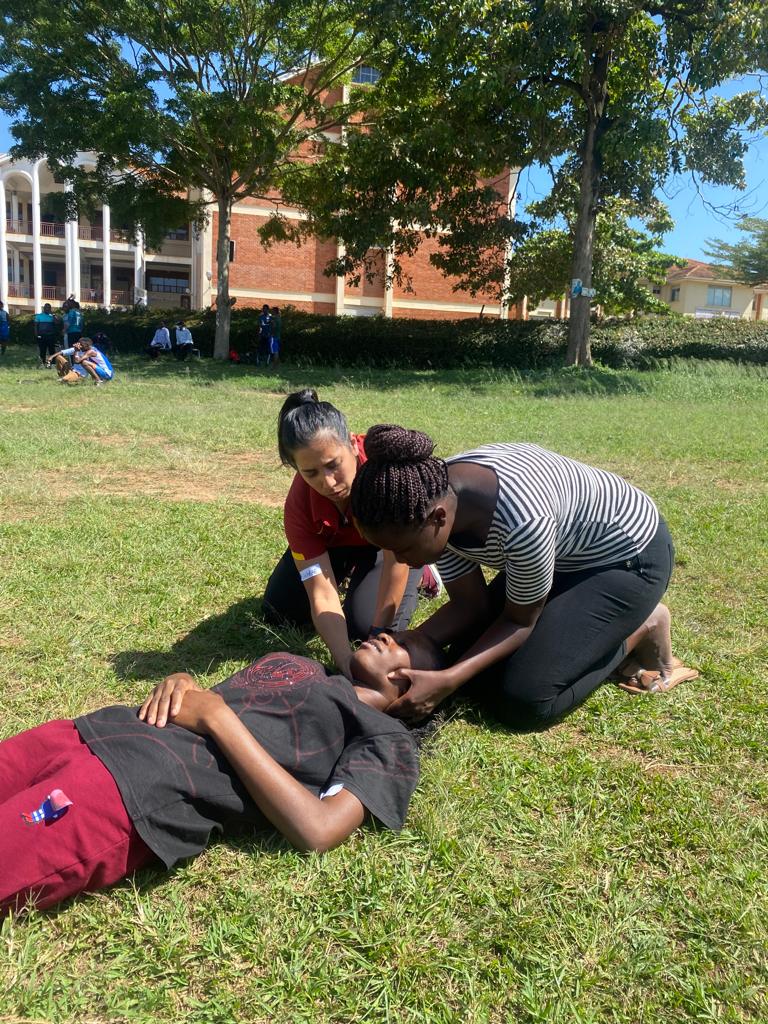07.01.2022
By John Hobbs
A Trojan Physical Therapist in Uganda

As part of a medical mission trip, faculty member Sharae Tejada furthers the reach of USC physical therapy on the African content in hopes of continuing to develop sports and exercise medicine in Uganda.
BY JOHN HOBBS MA ’14
ONLY WEEKS AGO, Sharae Tejada ’07, DPT ’11 found herself halfway around the globe — in Uganda — as part of a team of seven physicians and three physical therapists fulfilling a mission for Canada-Uganda Sports & Exercise Medicine, an organization dedicated to the advancement of sports medicine in Uganda.
During the two-week medical mission trip, the team split their time between teaching a three-day course and providing treatment as part of an open clinic for national athletes from the worlds of track and field, volleyball and basketball.
It was the first trip in which the physical therapists were also invited to teach. Tejada and her colleagues taught a course focused on on-field assessment and treatment, return-to-sport testing and movement analysis to students at the Mbarara University of Science and Technology.
We caught up with Tejada, a clinical instructor of physical therapy who completed her orthopedic residency at USC in 2012, to see how her first trip went.
How would you describe the physical therapy profession in Uganda as compared to it here?
Physical therapy in Uganda is not as regulated, especially in sport. It is a certificate program; they are working on making it a master’s degree program. There are no regulations for people who work with sports teams, and many people call themselves “sports therapists” or “sports doctors” without any formal training. That said, the students we were teaching were well-educated in didactic information and were so engaged while we were teaching them.
What do you going on think trips like this could teach USC DPT students?
I think the biggest thing students can gain is how fortunate they are with their resources that are readily available to them. The students I met in Uganda had to fight for any opportunity they had and were so eager to learn. The treating aspect of the trip was also a big eye-opener because the athletes also had so little with regards to resources. It is important for students to see how much can be done with little equipment and what a big impact they can have on every patient they encounter no matter what the circumstance.
What did you learn about yourself and the profession as a result of taking this trip?
I taught alongside two PTs from Canada, one of whom was educated in Iran. We all taught and treated differently, and it highlighted how different therapists practice across the world. I think it has also solidified my thoughts on teaching our students. It makes me more excited to teach our entry-level DPT students knowing how big of an impact they will all have in the future.
Why is it important for practitioners to give back in this type of way?
There is still such a huge discrepancy in care that is given around the world, particularly in poorer countries. One of the big things that drew me to this trip was the teaching component. It is so much more valuable for us to spend our time educating other practitioners to leave a lasting impression and to hopefully make every subsequent group of students better than the one before them. If we’re able to share our knowledge instead of just our treatment, it will speed up the progress that happens in other countries. I had such a wonderful experience on this trip and would love to see some of my colleagues participate with this group in the future.

